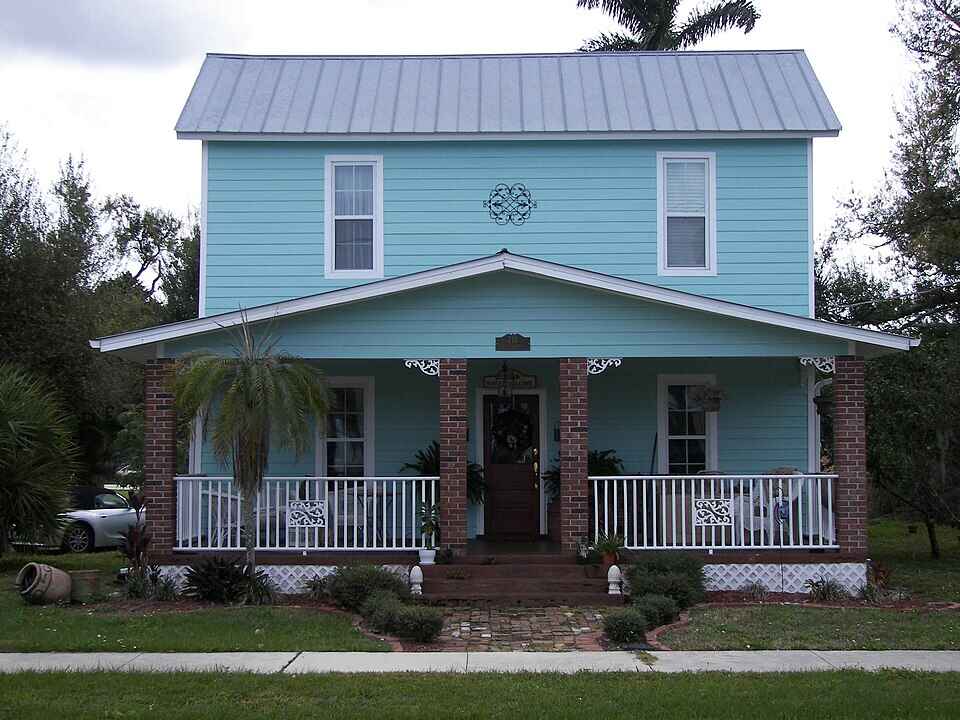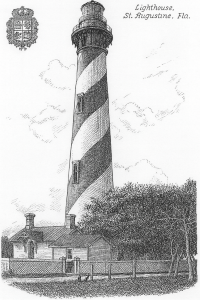- Home
- Florida History
- Florida Heritage Sites
- Punta Gorda Residential District
PUNTA GORDA RESIDENTIAL DISTRICT
By Mike Miller June 7, 2025
OVERVIEW
The Punta Gorda Residential District is a historic area in Punta Gorda, Florida. It spans 22 city blocks west of downtown.
The district includes 125 mostly residential buildings. It was added to the National Register of Historic Places in 1991.
Visitors can walk streets to see preserved homes. The area reflects Punta Gorda’s early growth. Admission is free for self-guided exploration.
 House in the Punta Gorda Residential District
House in the Punta Gorda Residential DistrictHISTORICAL SIGNIFICANCE
Punta Gorda began in 1884 when Isaac Trabue subdivided land. The Florida Southern Railroad arrived in 1886, spurring development.
The town incorporated in 1887, named Punta Gorda for its harbor point. The district’s homes, built from 1884 to 1930, show Frame Vernacular and Queen Anne styles.
The 1920s Florida Land Boom added Neo-Classical structures like City Hall. Early settlers, including James and Josephine Lockhart, shaped the area.
Phosphate mining and fishing drove growth by 1896. Hurricane Charley in 2004 damaged many homes, but most were restored.
The district preserves the city’s early residential history.
VISITING DETAILS
The district is bounded by West Retta Esplanade, Berry Street, West Virginia Avenue, and Taylor Street in Punta Gorda, FL 33950.
From I-75, take exit 164, follow US-17 south into downtown. It’s open 24/7 for walking; no admission is required. Start at Gilchrist Park for harbor views.
The Punta Gorda History Center at 512 Cross Street offers exhibits; call (941) 916-9436 for hours, typically weekdays. Pick up walking tour maps at the Chamber of Commerce, 252 West Marion Avenue.
Wear comfortable shoes for uneven sidewalks. Visit in winter to avoid heat. Check the city’s website for events like History Park’s Sunday Market.
INTERESTING FACTS
- The district survived Hurricane Charley in 2004 due to sturdy Victorian construction.
- The A.C. Freeman House, built in 1903, was moved to 311 West Retta Esplanade in 2006.
- Isaac Trabue’s 1886 cottage still stands on Retta Esplanade.
- Many homes feature wraparound porches for ventilation in pre-air-conditioning days.
- The district includes the Neo-Classical City Hall, built in 1927.
- Early settler James Lanier lived here before selling to Trabue in 1879.
- The area’s layout follows Trabue’s 1885 grid, with parks along the waterfront.
CITY OF PUNTA GORDA WEBSITE
LOCATION MAP

Florida is the fastest-growing state in the United States and also the fastest-changing. If you see anything in this article that has changed or is in error, please let me know.
Thousands of Florida fans subscribe to our free daily Ezine, Florida Heritage Travel and we have 130,000 followers on Facebook.
By Mike Miller, Copyright 2009-2025
Florida-Back-Roads-Travel.com
Florida Back Roads Travel is not affiliated with or endorsed by Backroads, a California-based tour operator which arranges and conducts travel programs throughout the world.
